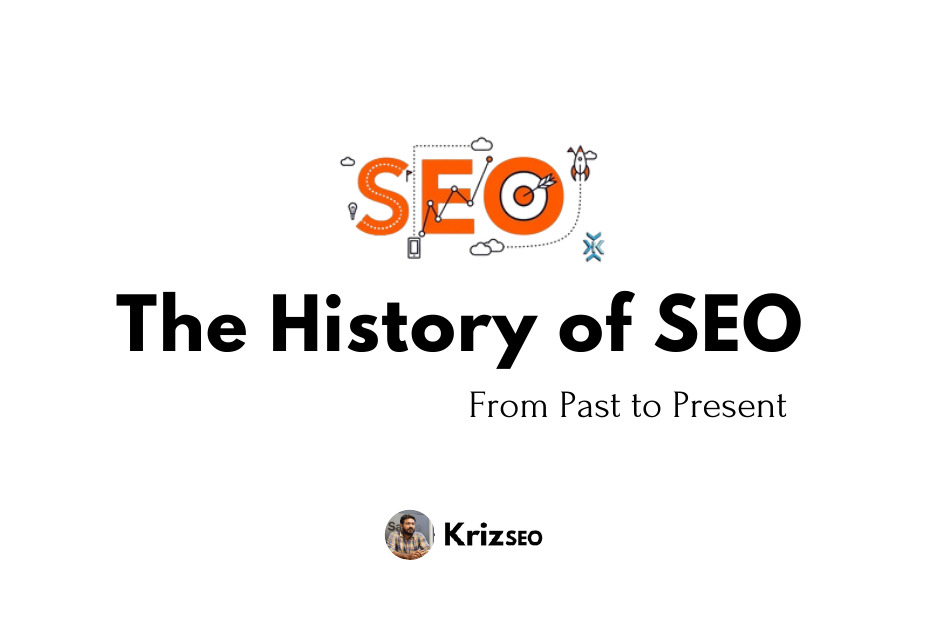SEO (Search Engine Optimization) has evolved dramatically since its inception. From simple keyword stuffing to sophisticated algorithms that analyze user intent, SEO has adapted to meet the ever-changing demands of both search engines and users. Understanding this history helps us appreciate how far digital marketing strategies have come and why staying up-to-date with SEO practices is critical for success. Understanding the history and evolution of SEO is crucial for anyone looking to master this vital digital marketing tool. This blog gives an overview of the evolution of SEO
The Birth of SEO (1990s)
The birth of SEO in the 1990s coincided with the rise of early search engines like Yahoo and AltaVista, which became essential tools for navigating the growing internet. This era marked the beginning of search engines acting as gatekeepers of online information. Platforms like Archie, Excite, and Yahoo! revolutionized how people searched for content, shaping the foundation of SEO as businesses and websites began optimizing their presence to rank higher in search results and attract more visitors. The rise of these search engines forever changed how information was accessed and managed online.
Archie (1990)
In 1990, Archie made history as one of the first search engines, revolutionizing the way users navigated the internet. By organizing FTP files and enabling keyword-based searches, Archie allowed users to easily access and locate online data. This innovation laid the groundwork for modern search engines, simplifying the process of finding information in the vast digital world.
Excite (1995)
In 1995, Excite transformed the search engine landscape by introducing a more user-friendly interface that made online navigation smoother for users. It utilized keyword matching and website popularity to deliver more relevant search results, setting a new standard for search accuracy and efficiency. This innovative approach quickly made Excite one of the most popular search engines of its time, helping users find information with ease.
Yahoo (1994)
Launched in 1994, Yahoo! initially began as a human-edited directory of websites, offering categorized listings that made finding information simpler and more organized. By curating content manually, Yahoo! provided users with a more structured way to navigate the web. Over time, it evolved by integrating algorithmic indexing alongside its human-curated directories, combining the precision of algorithms with the personal touch of human editing to enhance the search experience.
Early SEO Tactics
In the early days of SEO, webmasters focused heavily on keyword stuffing and meta tag manipulation to boost website rankings. Search engines primarily relied on keywords and meta tags to determine a site’s relevance, leading webmasters to excessively insert keywords into content, often resulting in awkward and unnatural writing designed more for search engines than human readers. Basic on-page factors such as meta tags, keyword density, and content length were crucial to ranking success. Additionally, meta tags were overloaded with keywords to artificially increase visibility, while excessive backlinks were used to inflate rankings. These practices, however, often led to a poor user experience and misleading search results.
The Rise of Google (2000-2005)
Challenges of Early Search Engines
Between 2000 and 2005, the rise of Google transformed the search engine landscape, addressing the challenges faced by earlier search engines. In the late 1990s, search engines often struggled to deliver accurate and relevant results due to their rudimentary algorithms. This made it easy for spammy websites to manipulate search rankings using unethical tactics like keyword stuffing and link manipulation. Google introduced more sophisticated algorithms, drastically improving search accuracy and curbing the impact of these deceptive practices, setting a new standard for search engine performance.
Google’s Introduction (1998)
In 1998, Larry Page and Sergey Brin introduced Google, revolutionizing the search engine landscape by prioritizing the quality and relevance of search results. Their innovative PageRank algorithm was a major breakthrough, as it analyzed factors such as backlinks and user engagement to determine a page’s authority. This approach set Google apart from other search engines, focusing on delivering more accurate and meaningful results by evaluating the overall quality of web pages rather than relying solely on keywords and meta tags.
Impact of Google’s PageRank on SEO
Google’s introduction of the PageRank algorithm had a profound impact on the SEO industry, shifting the focus from keyword stuffing to quality content and ethical practices. By emphasizing backlinks and site authority, Google set a new standard for search engines, transforming how websites were ranked. This change pushed SEO strategies to prioritize quality over quantity, as search engines grew smarter and began valuing meaningful, user-focused content. As a result, webmasters adapted to these changes, focusing on building authoritative links and creating valuable content to improve rankings.
Algorithm Updates and Content Quality (2005-2010)
Major updates like Google’s Florida, Panda, and Penguin algorithms dramatically changed the SEO landscape. The Panda Algorithm, introduced in 2011, penalized websites with low-quality, thin content, pushing SEO professionals to adopt high-quality, user-centric practices. In 2012, the Penguin Algorithm targeted websites with spammy backlink profiles, encouraging ethical link-building and valuable content creation. As content quality became a key ranking factor, SEO strategies shifted towards relevance, unique content, and authentic link building. Google’s algorithms now consider hundreds of ranking factors, making SEO increasingly complex and ever-evolving. Search engines, especially Google, prioritize websites that offer high-quality, informative content, ensuring the focus is on providing the best possible user experience rather than manipulating rankings.
Changing Role of Keywords
Keywords remain an important aspect of SEO, but their role has evolved to require more strategic integration within content. Search engines now prioritize context and relevance, focusing on content that aligns with user intent rather than relying solely on exact-match keywords. This shift encourages SEO professionals to create more natural, informative content where keywords are seamlessly embedded, ensuring that the content addresses what users are actually searching for, rather than just matching specific term.
User-Centric Keyword Strategies
Keyword usage in SEO should feel natural, with content designed to satisfy the user’s search intent—whether it’s providing information, reviews, or comparisons. Search engines now assess not just the presence of specific keywords but also related keywords and semantic variations to determine the overall relevance of content. This encourages creating content that fully addresses the user’s needs and queries, making the content more comprehensive and valuable, rather than simply focusing on exact keyword matches.
Mobile and Local SEO (2010-2015)
Between 2010 and 2015, mobile and local SEO became pivotal as mobile search surged and Google introduced mobile-first indexing. With more users searching on mobile devices, optimizing websites for mobile performance and user experience (UX) became critical to ranking well in search results. At the same time, local SEO gained importance, especially with the introduction of features like Google My Business, which helped businesses improve their visibility in local searches. As a result, both mobile optimization and a strong local presence became essential components of successful SEO strategies during this period.
AI, Voice Search, and User Intent (2015-Present)
From 2015 onward, advancements in artificial intelligence (AI), such as Google’s RankBrain, began influencing search rankings by helping search engines better understand user intent. Voice search also transformed SEO strategies, as the way keywords were targeted shifted to accommodate more conversational queries. With these innovations, search engines started prioritizing not just matching keywords but understanding the context and intent behind searches, delivering more personalized and accurate results. This focus on AI and voice search has made SEO more user-centric, emphasizing content that directly addresses the needs and preferences of users.
Current Trends and the Future of SEO
Current SEO trends place a strong emphasis on user experience, with core web vitals and page speed becoming crucial factors in ranking. Search engines now prioritize websites that offer fast, seamless performance, ensuring a positive user experience. Additionally, structured data and semantic SEO have gained importance, helping search engines better understand and categorize content for more accurate results. AI continues to play a growing role, not only in influencing search rankings but also in predicting search trends and user behavior, making SEO more dynamic and focused on delivering personalized, relevant content. The future of SEO will likely center around enhancing user experience through intelligent, data-driven strategies.
SEO has undergone massive changes from its inception to today, but one thing remains consistent—SEO continues to be a powerful tool for businesses to increase their online visibility. Staying updated with the latest trends and embracing changes will ensure your SEO strategy remains relevant and effective.

Krishnendu (Kriz) – Kerala’s No. 1 Freelance SEO Expert, with an MBA in HR and Marketing and extensive experience across various marketing fields, Krishnendu, popularly known as Kriz, has established himself as Kerala’s leading freelance SEO expert. Transitioning into digital marketing, he quickly specialized in SEO, leveraging his strong knowledge of branding and digital marketing concepts. Kriz has successfully managed multiple projects, helping businesses enhance their online visibility and drive organic traffic to their websites. His expertise lies in crafting strategic digital marketing and branding plans tailored to each client’s unique needs and objectives, and implementing effective optimization techniques to improve search engine rankings.



